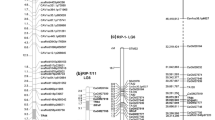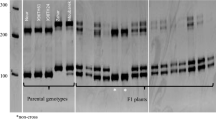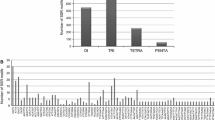Abstract.
Chickpea, a self-pollinating diploid annual with 2n = 2x = 16 chromosomes, is an important food legume crop throughout the world and especially in developing countries. A gene that confers double-podding, with the symbol "s", is considered important for breeding higher yielding cultivars. Positive effects of "s" on yield stability were found by comparing single- and double-podded near-isogenic lines (NILs) derived from a cross of CA-2156 (single-podded) with JG-62 (double-podded). Considering the significant effects on seed yield, the NILs were used to identify molecular markers closely linked to "s". Sequence tagged microsatellite site (STMS) markers developed for chickpea, random amplified polymorphic DNA (RAPD) and inter simple sequence repeat (ISSR) markers were used to analyze the NILs. Out of 400 RAPD, 100 STMS and 100 ISSR markers, one STMS marker (TA-80) was polymorphic and was used to evaluate a recombinant inbred line population developed from the cross of Surutato-77 (single-podded) × JG-62 (double-podded) for co-segregation of the locus with "s". Our results indicated that the marker and "s" were 4.84 cM apart. This marker may be used by breeders for marker-assisted selection (MAS) to monitor the incorporation of the double-podding gene into improved germplasm.
Similar content being viewed by others
Author information
Authors and Affiliations
Additional information
Electronic Publication
Rights and permissions
About this article
Cite this article
Rajesh, .P., Tullu, .A., Gil, .J. et al. Identification of an STMS marker for the double-podding gene in chickpea. Theor Appl Genet 105, 604–607 (2002). https://doi.org/10.1007/s00122-002-0930-4
Received:
Accepted:
Issue Date:
DOI: https://doi.org/10.1007/s00122-002-0930-4




